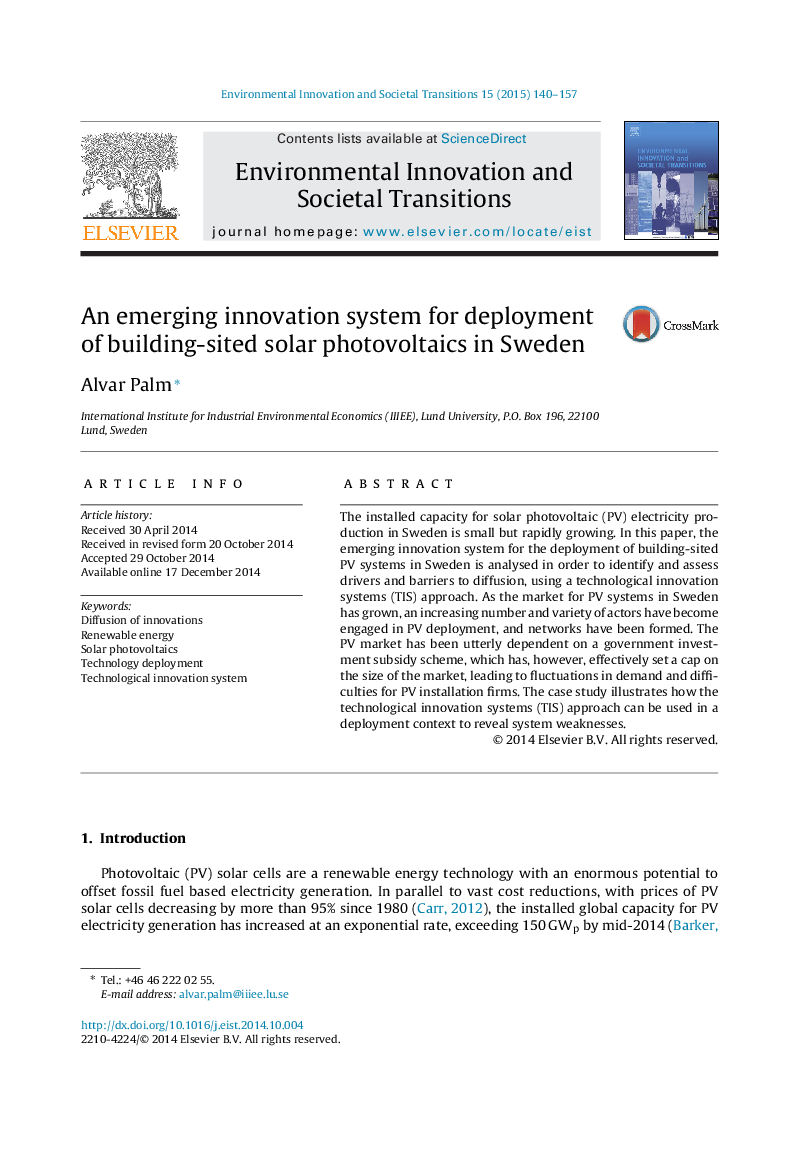| کد مقاله | کد نشریه | سال انتشار | مقاله انگلیسی | نسخه تمام متن |
|---|---|---|---|---|
| 108194 | 161882 | 2015 | 18 صفحه PDF | دانلود رایگان |
• Drivers and barriers to deployment of solar PV in Sweden were studied using TIS.
• A deployment focus highlights new actor groups in the TIS.
• The deployment focus has implications for the functional dynamics of the TIS.
• Poor design of subsidies hampers the functional dynamics of the TIS and PV deployment.
• TIS analysis serves to reveal system weaknesses also with a deployment focus.
The installed capacity for solar photovoltaic (PV) electricity production in Sweden is small but rapidly growing. In this paper, the emerging innovation system for the deployment of building-sited PV systems in Sweden is analysed in order to identify and assess drivers and barriers to diffusion, using a technological innovation systems (TIS) approach. As the market for PV systems in Sweden has grown, an increasing number and variety of actors have become engaged in PV deployment, and networks have been formed. The PV market has been utterly dependent on a government investment subsidy scheme, which has, however, effectively set a cap on the size of the market, leading to fluctuations in demand and difficulties for PV installation firms. The case study illustrates how the technological innovation systems (TIS) approach can be used in a deployment context to reveal system weaknesses.
Journal: Environmental Innovation and Societal Transitions - Volume 15, June 2015, Pages 140–157
